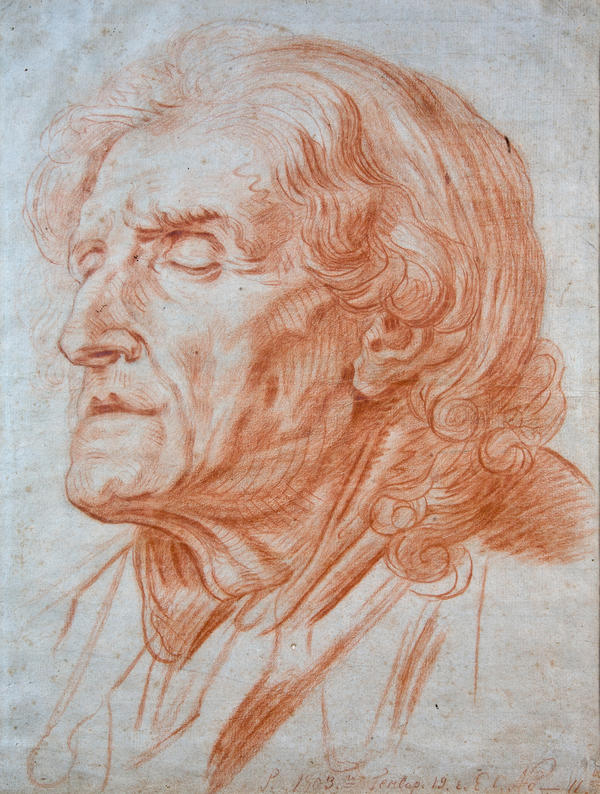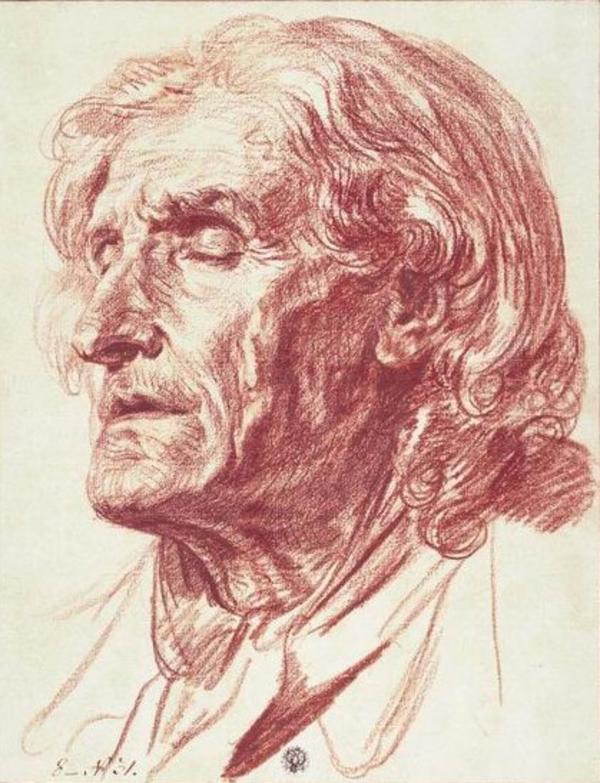The name of the artist who drew the Head of an Old Man is still unknown. Many students of the A.V. Stupin Arzamas School were serfs, which means that many of their civil rights, including the copyright, were denied. According to memoirs by Pyotr Kornilov, an art historian, at the beginning of the 19th century, the Alexander Stupin School was ‘the only nursery of artistic knowledge for talented serfs.’ For this reason, many works remain unsigned.
Drawing lessons were a mandatory part of the programme for all students of the Arzamas School of Painting. For a year, they had two to four hours of drawing every day. The full course consisted of copying originals, drawing gypsum figures and art models, and a subject titled ‘Drawing All Kinds of Lines’.
Pupils of the Stupin School were initiated into the science of drawing in several steps, since drawing was considered the basis of all arts. At first, they mastered basic skills: learned to sit correctly, hold a pencil, and draw lines; then they began working with the so-called originals – impressions of drawings made by prominent or honor-roll students and by academy teachers.
At the first stage of copying, Stupin’s trainees depicted engraved images of parts of the human head and body. After some time, the students were able to reproduce proportions and volumes, and to employ different techniques. Since Alexander Stupin, along with his assistant, supervised the process in the classroom, he could evaluate talents of each student and develop further education programmes.
In 1809, the Council of the Imperial Academy of Arts started giving medals and reviews to the best works produced by the students. Stupin himself selected them, and the Academy was “pleased by the flair and excellent achievements of the teacher and the students answering. . . its expectations for the diligence and talents of new artists receiving education in that area.” In 1811, the Council included works by the Arzamas School graduates in the annual exhibition for the public to view, which meant recognition of their professional achievements.
The final stage of the training was developing drawing skills in a life class. All students who completed “the Science of Art” course became skilled sketch artists, and their skills were not inferior to those of the Academy of Arts graduates.
Drawing lessons were a mandatory part of the programme for all students of the Arzamas School of Painting. For a year, they had two to four hours of drawing every day. The full course consisted of copying originals, drawing gypsum figures and art models, and a subject titled ‘Drawing All Kinds of Lines’.
Pupils of the Stupin School were initiated into the science of drawing in several steps, since drawing was considered the basis of all arts. At first, they mastered basic skills: learned to sit correctly, hold a pencil, and draw lines; then they began working with the so-called originals – impressions of drawings made by prominent or honor-roll students and by academy teachers.
At the first stage of copying, Stupin’s trainees depicted engraved images of parts of the human head and body. After some time, the students were able to reproduce proportions and volumes, and to employ different techniques. Since Alexander Stupin, along with his assistant, supervised the process in the classroom, he could evaluate talents of each student and develop further education programmes.
In 1809, the Council of the Imperial Academy of Arts started giving medals and reviews to the best works produced by the students. Stupin himself selected them, and the Academy was “pleased by the flair and excellent achievements of the teacher and the students answering. . . its expectations for the diligence and talents of new artists receiving education in that area.” In 1811, the Council included works by the Arzamas School graduates in the annual exhibition for the public to view, which meant recognition of their professional achievements.
The final stage of the training was developing drawing skills in a life class. All students who completed “the Science of Art” course became skilled sketch artists, and their skills were not inferior to those of the Academy of Arts graduates.





